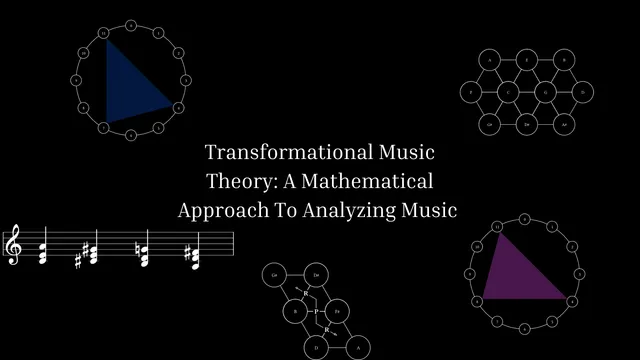Transformational Music Theory: A Mathematical Approach To Analyzing Music
A primer on transformational music theory, which combines math, specifically group theory, with music theory. This post uses basic group theory and set theory, so familiarizing yourself with those fields is encouraged before reading this piece. Prior music theory knowledge is also recommended, but not required.
Analytics
Comments
5
I would say that this explainer probably suffers from the same ailment as most like it. Namely that it may be too mathy for music people and to musicy for math people, at least in the initial opening. I don't know how open a standard math major would be to being lead in to a topic via music theory. Admittedly I have never really been that good at music and music theory exams were the bane of my existence.
In general, I would however say that the actual meat and potatoes. The math explainer itself, is very nice. I liked the visualisations and found them plesent and easy to grasp. They definitely aided in my understanding. A particular thing that I did like was the simple linking that the circle of fifths could be treated as a group. Though a bit basic sure, I really liked the segue and it definitely gave me a nice example to firm my understanding. Especially given that I only really learnt about them quite recently.
Side note, it may just be my computer, but the rendering of some of the LaTeX is cut off at the bottom in the subscripts. Specifically in the neo-riemannian section, but this is a cosmetic gripe and just meant that I had to focus a bit harder.
All in all, quite enjoyable.
7.1
Thank you for giving us a brand new perspective to see the application of abstract algebra. Personally, I don't completely understand the importance of it. Maybe that's because I'm not familiar with music.
Overall, the content is good.
6.7
I enjoyed this a ton, but as someone with both a music theory and math background, think the typical reader could use more concrete examples. Explain in minimum terms first, then expand and generalize.
7
Interesting application of group theory to music! Not sure I have quite enough background to follow everything properly, but it seemed well-explained.
6.1
The article presents nice relations between mathematical and musical structures, but there are too many technical terms in the musical part. It would be better to have more visual and audio examples.
7.3
Very nice! One minor nitpick: the pictures should be slightly bigger (for my screen anyway).
5.8
As someone with a decent background in music theory, I was curious why L and R were chosen as the basis. If I’m not mistaken, it was only in half a sentence, much later when constructing the Tonnetz, that it was called out that these transformations each change only one of the three notes. I also had to reason out that (LL) = (RR) = identity. I apologize if I missed some of this in the text although I did try to read every word of this (not always the case) given my music background.
In the flattened Tonnetz there are three directions and each of L, R, P represents movement along one of those three directions, forward or backward. I feel like this and all of the above might have been presented for the reader as justification for using this approach instead of something more basic like the circle of fifths. Because other basis transformations exist and they would be less useful.
3.2
Lack of interacive elements and rushed contents
5.2
The Tonnetz section became a bit hard to follow, but it was ok overall.
5.1
It would be nice to be able to see and hear a few basic examples of the R, L, and P transformations when you define them.
5.1
I don't have enough understanding of music to have a handle on this. I suspect that's my loss.
6.8
Thank you for this fascinating piece with how Tonnetz relates to Neo-Riemannian Analysis, in the large branch of Transformational Theory.
After reading this article, I came to imagine three fellows who meet: fellow one and fellow two root their time in studying math and music, respectively. The third fellow observes a breadth of work in math and music. From there, they meet someone in representational theory, and together, they develop a user-interface which allow math, music, and those who enjoy both (but have a bird's eye view) to test these transformations visually, or compound their own concoctions to test out with their favorite instrument.
5.9
I think that this formulation of the theory was quite interesting as I never explored into this and overall, it was fairly straightforward for someone with some mathematical background. I think that the audience for music and maths has quite a lot of overlap, so it'd also be good to motivate how the neo-Riemannian transformations are defined this way and why it was. Intuitively, I might understand it as focusing through the relative minor or moving up one step the circle of fifths, and that would provide a nice tidbit.
7.6
Interesting subject and very well written! I feel like I've only seen the tip of an iceberg I want to learn much more about. I don't have any specific feedback, I just wish there is a follow-up that digs deeper, maybe with some more examples.
